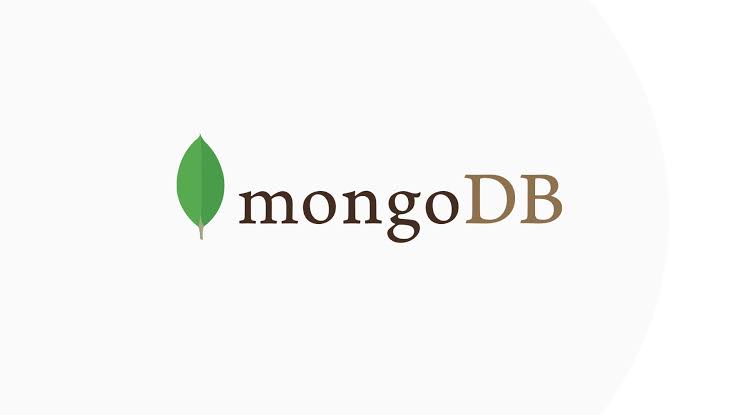
Nisha Harshwal:-Share details about the inception of Liferay?
Mr Bryan Cheung:-Liferay got started when Brian Chan, our Chief Software Architect, wanted to provide affordable enterprise portal software to companies and non-profit organizations. He created the Liferay Portal, which was immediately adopted not only in the US but also globally in Spain, Germany, and Brazil. Open Source was growing in popularity, and developers liked building sites with Liferay, which had a lot of features, worked well for complex business scenarios, and was easy to integrate with.
In 2004, the company was formally created, and quickly expanded to Germany, Spain, and China. In March 2009, Liferay established our Indian subsidiary in Bangalore. To date, Liferay has 24 offices worldwide with over 250 partners and 180,000 open source community members.
Nisha Harshwal:-What is your mission and vision for 2019
Mr Bryan Cheung:-Liferay believes the value of customer portals, partner portals, and intranets is not just in building them once to deliver information and functions to users. Companies must use those touchpoints to understand the customer and user needs and use that insight to further improve those experiences and their product and service offerings.
For example, a heavy equipment manufacturer has a dealer portal for dealers to place orders and obtain service for the end customer. But to take things further:
-
The manufacturer also personalizes the experience. Based on the products that the dealer has already purchased, they show related accessories and service offerings.
-
The site can analyze dealers’ success rate in filling out service request forms to see how they can improve the form design to get more successful submissions.
-
Depending on the type of issue, the site suggests personalized knowledge base articles so the dealer or end customer can try to resolve the issue themselves.
-
The site also analyzes historical order data to forecast and recommend future orders.
This next frontier of customer experience is full lifecycle—both before and after the customer purchases goods and services. It also requires that all audiences—internal employees, partners, agents, dealers, and the end customer—have consistent experiences designed to serve the customer together.
The technologies required to deliver this value proposition include intelligence, data, and analytics, but these also work in tandem with core enterprise capabilities such as account servicing, complex permissions management, security, and integration.
Nisha Harshwal:-What are the myths about using open source technology in the Government sector?
Mr Bryan Cheung:-Well, the first and foremost myth about Open Source technology, in general, is that “it is not secure.” That’s not true. Most Open Source technology is an outcome of the collaboration by the finest brains in the world following industry standards to produce a very high-quality software product. A lot of traditional software companies are learning best practices from the Open Source model to make their offerings more secure and high quality. For example, many of the processes and disciplines we follow in agile development today has been part of the Open Source model of development since the beginning.
The second myth about Open Source is that it’s free While the letter ‘F’ in FOSS (Free Open Source Software) represents Freedom to use the product, that does not necessarily mean the whole process is free. There are likely to be implementation costs and most commercial open source companies sell enterprise subscriptions that include the right to use the tested source code of the product along with SLA-driven support.
These are myths across industries and are not unique to government. Governments across the globe are often strong supporters of commercial open source software because of their need for a massive scale in a cost-efficient manner.
 Nisha Harshwal:-Digital disruption and how open source are driving force behind technology innovation?
Nisha Harshwal:-Digital disruption and how open source are driving force behind technology innovation?
Mr Bryan Cheung:-Ideation is the first phase of innovation, but innovations are not necessarily revolutionary nor disruptive at the time they originate. Statistically, most innovations are the result of a current need in society or business. Technology innovations are a perfect example of this. Disruptive technologies are pervasive for technology innovations. We have many pieces of evidence of this such as innovations around AI/ML, Blockchain, Virtual realities, etc. Every other product in the industry wants to use AI or use IoT which was merely a theory not too long ago. Digital disruption driving technology innovations is inevitable.
Open Source has not only democratized the development lifecycle of software products but also the end-user usability of technology by making it more affordable with a higher pace of innovation.
The process of converting an idea into innovation involves multiple steps and depends on many factors. Considering the influence of technology in this process, the following are the important aspects.
-
Ease of building a PoC or Prototype for this idea
-
The cost involved in creating the prototype itself
-
Time and resources required to build the prototype before it can go for a pilot run.
Ease of building a PoC or Prototype for this idea
The most important part of building a prototype is how quick you can get it ready to prove the idea is practical. This decision can be made easy if you have platforms, datasets, algorithms, code snippets, etc ready to use. Open Source makes this possible. Github alone hosts millions of open source projects. Tools like Python, Kafka, Spark, Hyperledger are driving innovations across the domains. The reason for selecting these tools is simple as they have lots of contributors which makes it easy to build prototypes.
The cost of building the prototype
As innovation is both a process and a result, the overall cost is a direct cost to the business entity as the result of that innovation is unknown. This becomes a primary factor in most of the situations and innovations are stopped either at the ideation phase or in the prototyping phase.
Time and resources required to build a prototype
Time to build a prototype though does not define the future of innovation but gives a fair idea about the process of innovation. While we talk about the high-level cost and time benefits of using Open Source technologies for innovations it is very important to look at the ground realities of them.
Most of the opensource technologies revolve around some well-known open-source languages such as java, python, Perl, C, C++, Scala, etc and database choices are usually MySql, PostgreSQL, MongoDB, Cassandra, CouchDB, etc. To learn and understand them is relatively easy and even is backed by a strong community.
Nisha Harshwal:-The benefits of Open Source software for Digital workplace development?
Mr Bryan Cheung:-Digital workspace is a part of a broader process of Digital transformation. Many times, organizations misinterpret digitizing the workspace with digital transformation. Sometimes it is digital transformation, especially for government sectors. In many countries government operations and processes are still paper-oriented, for them, transforming these paper-based processes to paperless processes is digital transformation. This context is required to understand the benefits of Open Source in Digital workspaces. Digital workspace usually involves following transformations
-
Paperless office
-
Business processes/workflows
-
Collaboration – Chating, Sharing files, knowledge management, forums and so on
-
Document Management – record management, file management, etc
-
The list goes on…
Not all the offices would indeed require a transformation of all those processes mentioned above. This is where Open Source tools/Software play an important role.
Various proprietary solutions offer plenty of features. But at the same time, these are very expensive for many organizations, especially for those who are still running on papers. Also, these tools would limit the innovations within the organization as the organization would be limited by the technology stack they can use to innovate.
Transforming an office to Digital workspace is a cost to the organization, they would like more flexible tools, do not lock vendors, has more scope of innovation and so on. And in such a scenario, Open Source fits in which also comes with a great cost advantage.
Nisha Harshwal:-Whom do you consider as the most highly rated competitor and why?
Mr Bryan Cheung:-We see a lot of IT departments wanting to build new digital experiences from scratch using a front-end framework like Angular talking directly to microservices on the back end. While this is a popular approach, many in the industry recognize that this kind of architecture pushes the complexity from the application to the environment, and this creates its issues.
Liferay’s product portfolio seeks to provide the front-end flexibility (including headless support for Angular and React) and support for microservices-style development, but to manage the complexity (including service availability, scaling, failover, etc.) through our platform.
We also compete with the big players like Adobe and Salesforce, as well as peers like Sitecore, Episerver and Acquia. Each of us has different strengths and weaknesses, but we see Liferay as particularly strong in the following:
-
Addressing the full customer journey, from research to onboarding to post-purchase
-
Addressing multiple audiences (customers, partners, employees)
-
Dealing well with business complexity (e.g. franchise, dealer, or partner-driven businesses)
-
Strong with developer experience, integration, and customization, which are essential for building customer experiences that go beyond surface-level content target and marketing initiatives
Nisha Harshwal:-What are your Future Plans?
Mr Bryan Cheung:-We look forward to ensuring all our activities are self-competent and that will enable us to plan for the coming days. Some of the areas where we are looking to invest more this year are customer success, channel business and strengthening our products.
Customer Success
We are investing in a new Customer Success program, led by Fred Tsai, formerly the Senior Director of Customer Success Strategy at Salesforce.
-
We want to build our reputation as an organization that helps companies develop their customer experience as a durable competitive advantage.
-
Digital experience initiatives require a combination of technology and company transformation to be successful, and we want to proactively deliver insight and best practices to customers to help them achieve their goals.
-
We will be increasing our coverage of dedicated Customer Success personnel to help our customers get the most out of their Liferay investment.
-
We will develop online Journeys that guide the many persons involved in delivering a Liferay project, from developers to enterprise architects and business users, in how best to use our products.
-
We will help ensure that customers in the planning phase of their Liferay projects clarify their goals and requirements so we can help them with the proper configuration of their Liferay software. These could be technical requirements (load balancing and environment configuration) or user requirements (page load time less than x, search result relevancy).
Channels
Channel partners continue to be a vital part of Liferay’s strategy. We will be investing further into our channels organization to empower systems integrators, digital agencies, and a new breed of “digital innovation” partners design, build and deliver Liferay solutions that differentiate customer experience for their clients. This goes hand in hand with our success program, which will also help improve our partners’ ability to deliver successful projects.
Product Plans
We are broadening our product portfolio to create more technologies that help differentiate customer experiences for complex businesses.
-
Our Commerce offering is designed for B2B and B2C scenarios and is particularly well suited for when the customer continues to make purchases, require service, and benefit from data-driven intelligence after their first purchase.
-
Analytics Cloud complements DXP to provide intelligence-driven experience optimization, by collecting user interaction data, using ML to calculate interests, and helping define segments of both individuals and accounts that can then be used to personalize, recommend, or optimize via A/B testing.
-
DXP Cloud is our enterprise PaaS designed to make it easier to develop, deploy, and manage enterprise solutions built on Liferay DXP. DXP Cloud provides CD/CI, build and environment management, container management, auto-scaling, backups, VPN, and much more.
-
For Liferay DXP, we are adding intelligence to many different feature areas. For example, we might guide business users creating new pages on how they should design the page for stronger user engagement based on best practices.
-
We are seeing headless as a valuable architectural approach. We’ve already added OpenAPI support in our commerce and content feature areas and will continue to evolve our headless strategy to stay interesting and useful to developers who want to use Angular, React, and other alternative front-end frameworks.
-
We are also looking at ways to evolve employee experiences from internally focusedIntranets to customer-experience enhancing digital workplaces. By digitally modeling internal processes and providing employees with tools to help resolve customer issues, we can directly connect a positive employee experience to differentiated customer experience.
Nisha Harshwal:-What were the key achievements of Liferay in the Year 2017-18?
Mr Bryan Cheung:-
-
We broadened our product portfolio to provide more value to our customers.
-
Liferay DXP, DXP Cloud and Analytics Cloud work together to address more of the needs of both Enterprise IT (DevOps and solution management) and the business (analytics, segmenting, personalization, search experience, content and web experience).
-
Liferay Commerce extends our value proposition to a new market segment, bringing together the best aspects of consumer digital commerce experiences with support for complex business requirements like multi-catalog support, preferential pricing, and support for dealer/distributor networks.
-
We successfully transitioned into the digital experience platform market and was named a Leader in that market by Gartner.
-
We’ve continued to grow at a healthy pace with worldwide presence, including in new markets such as the Middle East and Africa.
-
We’ve signed a key global partnership agreement with Leading Indian Global System Integrator for a joint digital transformation story with Liferay and TCS customers.
-
We have also managed to secure a few large Banks, Insurance companies, NBFC and Automobile customers in India mainly for use cases like Direct to Customer Journey and Highly robust and Multi-tenant dealer/ partner microssite.







